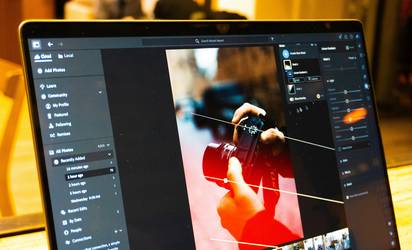How to Supercharge App Development with Imageslot
Imageslot is the developer’s toolkit for rapid, consistent, and automated placeholder image generation. Whether you’re working on mobile, desktop, or web apps, Imageslot streamlines prototyping, automates asset creation, and ensures visual consistency across devices—all with dynamic, CDN-delivered images.
Explore real-world integration examples, workflow automation tips, and actionable best practices for your next app project below.
Why Developers Use Imageslot in App Development
Rapid Prototyping
Swap in placeholder images instantly during wireframing or UI prototyping. No more time wasted searching for assets—just generate, copy, and go.
Automated Asset Generation
Integrate Imageslot URLs into build scripts or CI/CD pipelines to create consistent, up-to-date images for test builds and automated QA environments.
Consistency Across Devices
Generate images at exact sizes and aspect ratios for mobile, tablet, and desktop—ensuring pixel-perfect layouts everywhere.
Workflow Automation
Programmatically update or version images using dynamic URLs—no more manual asset swaps at every iteration. Perfect for agile teams and fast-moving projects.
Mobile & Desktop Ready
Use Imageslot in React Native, Electron, or any cross-platform framework. Supports multiple formats and resolutions for real-world device coverage.
Flexible API & CDN Delivery
Fetch images on-the-fly via a simple API. CDN ensures fast, reliable delivery worldwide—no need to host or manage static files.

Step-by-Step Integration Examples for App Development
1. Prototyping: Use Imageslot in Figma or React for Quick Mockups
Drop Imageslot URLs into Figma image fills or as <img> sources in React components. This allows you to iterate designs rapidly, with consistent placeholder images at any size or color.
{` `}
`}2. Mobile Apps: Integrate with React Native
Integrate Imageslot with React Native for iOS and Android mockups. Easily handle device size variations by constructing URLs dynamically based on device width/height.
{`import { Dimensions, Image } from 'react-native';
const { width } = Dimensions.get('window');
const height = 200;
const url = `https://imageslot.com/v1/${width}x${height}?text=Mobile+Demo&filetype=jpg`;
3. Desktop Apps: Use in Electron or Cross-platform Apps
For Electron, simply use Imageslot URLs in your HTML templates or dynamic imports. This lets you quickly swap placeholder assets during builds or demos.
{` `}
`}&v=build123 for cache busting on new releases.4. Automated Asset Generation: CI/CD & Build Scripts
Use Imageslot URLs in your test automation or CI/CD scripts to generate assets programmatically. Perfect for QA, end-to-end testing, or bulk asset needs.
{`// Example: Node.js script for automated asset URLs
const sizes = [
{ w: 320, h: 120 },
{ w: 728, h: 90 },
];
sizes.forEach(({ w, h }) => {
const url = `https://imageslot.com/v1/${w}x${h}?text=CI+Test&filetype=png`;
console.log(url); // Use with fetch, download, or inject for tests
});`}Actionable Tips: Optimizing Imageslot for App Workflows
- Use descriptive text: Include component/state in the
text=parameter (e.g.,text=Login+Banner). - Adopt a naming convention: Standardize image URL parameters for easy asset management.
- Handle responsive images: Use device width/height or
srcset(on web) to deliver proper sizes. - Version assets for cache busting: Add
&v=build123to force reload after updates. - Automate updates: Use build tools/scripts to update image URLs on each deploy or QA run.
- Experiment with formats: Use
?filetype=png/jpg/giffor different environments. - Leverage CDN: All Imageslot images are served over CDN for minimal latency—no extra setup.
Beginner’s Guide: Dynamic Image URLs & CDN Explained for App Developers
What is a dynamic image URL? Think of Imageslot as a universal image vending machine: you order an image by describing its size, color, and text in the URL, and you get a perfectly sized, ready-to-use image on demand. No need to upload or store assets.
How does CDN help? CDN stands for Content Delivery Network. Imageslot delivers every image from a global network of servers, making load times lightning-fast for users everywhere—no matter the device or location.
How do I integrate with frameworks? It’s the same as using a normal image URL. For React, Vue, or Electron, just set the image source to your Imageslot URL. No API key or SDK required for public images.
- Use
<img src="..." />in web or desktop. - Use
<Image source={{uri: '...'}} />in React Native. - Automate URLs in build scripts for test assets.

FAQ: Imageslot Integration & Best Practices for App Development
<img src="..."> or bind dynamic URLs in components. In React Native, set source={{ uri: url }} for <Image /> tags. For Electron or other desktop apps, use the Imageslot URL as you would any image asset. For more framework-specific tips, see our React Integration Guide or API Reference.
onError to set a backup image if Imageslot fails. For automated scripts, check HTTP status codes and retry if needed. For more, see our Troubleshooting Guide.
src attribute. For Electron, reference the URL in your HTML or JS. For integration walkthroughs, see React Integration or All Integrations.